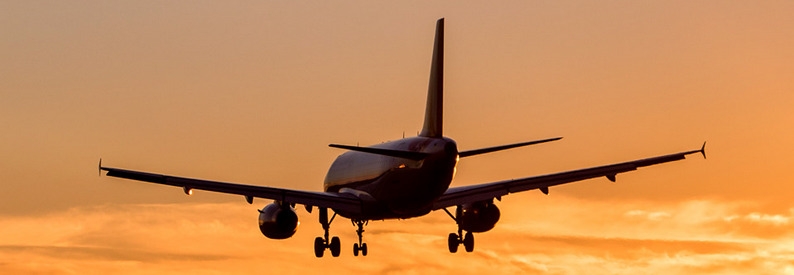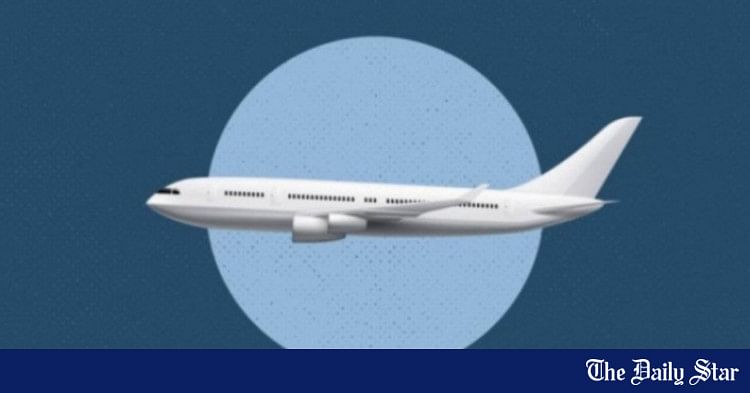Aviation industry: analysis of struggles
Mariha Tahsin 05 January, 2025, 00:00
BANGLADESH has had 11 commercial airlines since its independence and of them, only four are still operational. The seven airlines that are now defunct primarily put the closure of the operation down to high operational costs and limited revenue. Of the airlines that are operational, Biman Bangladesh Airlines is state-owned and the rest are private. In the 2023–24 financial year, Biman made a profit of $2.36 million. In the 53 years the airline has been in operation, it has recorded profits for only 17 years. But even in years when the airline makes a profit, the profit margin is considerably slimmer than the amount of losses incurred in loss-making years.
The other three airlines — Novoair, US-Bangla Airlines and Air Astra — are private that are not mandated to make public their financial statements. Episodes related to their management, however, indicate that these airlines are also struggling financially. In an interview in January 2023, Novoair’s managing director described the airline as ‘distinguished, if not profitable.’
In 2018, after a US-Bangla flight crashed during landing in Kathmandu, pilots employed by the airline revealed the airline’s risky cost-cutting practices. These included shooting approaches well below the minimum required visibility, departing for a destination with marginal weather or visibility, compromising on technical issues, flying without weather radars, forbidding pilots to give access to the engineering log, especially at outstations, to avoid grounding costs and employing inexperienced pilots on risky routes. One can easily deduce that the airline would not have to resort to such risky measures if it were operating on profit.
Air Astra began commercial operations only in November 2022. Thus, it is still early to comment on its profitability. The consistent financial struggles faced by almost all the airlines that have operated in Bangladesh indicate that the issue of low profitability extends beyond mere management challenges. This pattern suggests that the difficulties are rooted in deeper structural problems within the country’s aviation industry.
Global aviation industry
THE airline industry is notorious for its low profit margins. From the 1945 financial year to the 2024 financial year, the average profit margin across the global aviation sector has been a mere 0.92 per cent. However, profitability has improved in recent years, with the average profit margin rising to 3.6 per cent from the 2022 financial year to the 2024 financial year. However, this recovery has not been uniform across the world. North America and Europe have been the largest contributors to the industry’s positive financial outcomes, followed by the Middle East.
Several factors contribute to the relatively stronger performance of the airlines of these regions. High disposable incomes in these regions drive a greater demand for tourism, which in turn boosts profitability. Furthermore, extensive airport infrastructure and superior intercontinental connectivity give airlines in these regions a competitive edge by offering a diverse range of profitable international routes. The strategic location of Gulf hubs — often in popular tourist destinations — has also helped to elevate Gulf airlines as key connecting carriers within the global travel network.
However, there are factors that could potentially reduce the profitability of airlines in these regions. For example, major North American airlines such as Delta and Gulf carriers such as Emirates, Etihad and Qatar Airways have received billions of dollars in financial support from their respective governments through equity injection and nearly unconditional loans. If this government assistance were factored into their financial statements, it could push them into the loss-making category.
Additionally, the Gulf carriers have been criticised for allegedly benefiting from subsidised fuel, which disrupts fair competition. The allegations, however, are consistently brushed aside by the airlines. In contrast, Biman lacks several advantages enjoyed by North American and Middle Eastern airlines. It does not have access to subsidised fuel and operates in a country with low average disposable income. Its location is also not ideal for functioning as a major connectivity hub. Furthermore, Bangladesh faces several challenges such as a difficult law and order situation, restrictions on popular tourist activities such as drinking and gambling, a conservative societal outlook, limited tourist attractions and underdeveloped infrastructure. These factors make it unlikely for Bangladesh to attract significant tourist traffic. Additionally, its proximity to affordable and popular tourist destinations in South Asia further limits its appeal.
However, when comparing the financial performance of Biman Bangladesh Airlines to that of global airlines, it is evident that Biman’s results are in line with broader industry trends. From 2008 to 2024, the global aviation industry experienced an average loss margin of about 0.72 per cent. During the same period, Biman’s loss margin was slightly lower at 0.56 per cent, indicating that while Biman faces similar challenges, its losses are not worse than that of the global industry average.
Rationale for operating airlines
IT IS well established that airlines operate with low profit margins so much so that the interest earned from a regular savings account often exceeds the profits generated by the aviation industry. This raises the question: why do airlines continue to operate despite such slim margins? The reasons for running airlines vary significantly between governments and private entities. Many national carriers around the world such as Air India, Pakistan International Airways, Thai Airways and Malaysia Airlines have faced severe financial difficulties. Despite this, governments continue to provide financial support for their flag carriers, believing that airlines serve strategic national interests beyond mere profitability.
For tourism-dependent nations, a national airline is a key asset in attracting tourists at competitive prices. In countries such as Bangladesh, where remittances from migrant workers are a vital part of the economy, the national airline plays a crucial role in connecting these workers to their destinations. These workers often face language barriers, making a local carrier an essential services for their travel needs.
Governments sometimes run airlines with a political agenda, operating loss-making routes to satisfy certain segments of the population. A clear example of this is the Hajj flight operation of Biman Bangladesh Airlines. Although the flights are intended to be profitable, they often result in losses. Hajj agents have a financial incentive to shorten their clients’ stays in Saudi Arabia, leading them to skip pre-booked flights in favour of last-minute bookings. The last-minute changes increase costs, such as renegotiating airport fees in Saudi Arabia, purchasing tickets from other airlines for Biman’s passengers and under-using flights or leased planes. Despite the losses, the government continues to operate the flights to avoid offending religious sentiments of the Muslim majority.
Additionally, national airlines are seen as symbols of national pride, often referred to as an ‘embassy on wings.’ Air connectivity is crucial for stimulating economic activity across nearly all sectors. As a result, governments often provide private airlines with tax incentives such as exemptions from fuel taxes, reduced landing fees and corporate tax breaks. These incentives are designed to help airlines lower operational costs, support industry growth and remain competitive. For instance, Ryanair has received financial support from airports in Ireland and Italy to help it to operate at lower costs and expand its route network.
However, private Bangladeshi airlines do not enjoy similar policy support. Despite the lack of government assistance, several private carriers have emerged in the country in recent years, raising questions about the motivation behind their operation, especially when the likelihood of generating profits remains slim. The case of GMG Airlines provides some insight into the impetus of operating in Bangladesh’s aviation industry. The airline faced allegations of inflating revenue figures to mislead stakeholders and attract investments.
Reports suggested that funds were diverted for personal expenses of executives and tickets were sold that were never actually confirmed. In 2007, GMG Airlines reported profits of $84,000, but by 2010, this figure mysteriously ballooned to $6.6 million. This inflated financial data were used to convince the public to invest $25 million in a private placement at a 400 per cent premium. After raising funds from the public, the airline suspended its operation, promising to resume once it had updated its fleet. However, these plans were never realised.
While there is no concrete evidence to suggest that other private airlines in Bangladesh follow the same practices, these examples raise pertinent questions about the true motivation behind operating airlines in a market where profits are far from guaranteed.
What happens if Biman is shut down?
ALTHOUGH the financial performance of Biman Bangladesh Airlines is in line with the global aviation industry, there is ongoing debate about whether it would be more financially sensible to shut down the airline and redirect its resources to a more profitable venture. The answer largely depends on the role we expect the airline to play.
One perspective views the airline as a subsidised public service, essential for advancing the nation’s political interests, economic goals and maintaining national prestige. Among other functions, this would entail running routes that are not necessarily profitable for the airline to enhance connectivity; conducting VVIP flights — carrying the prime minister and their delegation to official visits — even if it disrupts regular flight schedules; transporting the bodies of deceased migrant workers when it is beyond the family’s financial capabilities and providing additional services to migrant workers to make their travel smooth. Beyond this, Biman creates jobs, sets competitive fare standards and forces other airlines to offer lower prices on certain routes. This improved connectivity supports business growth across various sectors of the economy.
If the airline is viewed as an economic venture, operational changes are necessary to reduce costs and make the airline profitable. This would involve scaling back functions driven by political or public interests, which do not align with the airline’s economic objectives. From this perspective, investing in enhanced in-flight services makes little sense as aviation is a price-sensitive industry. Ticket sales are primarily driven by competitive pricing, with service quality having a minimal impact on revenue.
The core issue is that Biman is expected to serve both these roles simultaneously which creates a conflict of interest. The objectives of operating as a public service and as an economically viable business are inherently contradictory. It is argued that if the national airline were shut down, the market gap would simply be filled by other airlines, both domestic and international. However, Bangladeshi private airlines have very limited international operations and have ceased such operations soon after attempting to expand abroad. This suggests that local airlines are unlikely to replace Biman on the international market. Even domestically, private aviation in Bangladesh faces significant financial and operational challenges, which could lead to inflated airfares in the absence of the national carrier setting the price benchmark.
Examples from other countries illustrate what can happen when a national airline is shut down without sufficient private carriers to absorb the market share. In such cases, international airlines often take the advantage of the gap, exploiting the market and consumers. A notable example occurred when South African Airways reduced its operations in 2019. As a result, private carriers like FlySafair and Kulula dominated the domestic market, increasing fares. International passengers flying from South Africa also saw a significant price increase because of the reduced competition in some markets.
The potential closure of Biman raises concern about how the market gap would be filled. While private airlines in Bangladesh face financial and operational difficulties, the absence of a national carrier could lead to higher airfares and reduced competition. Thus, the decision regarding whether to keep Biman hinges on the broader economic benefits of improved connectivity.
Mariha Tahsin is a PhD.




 www.newagebd.net
www.newagebd.net






